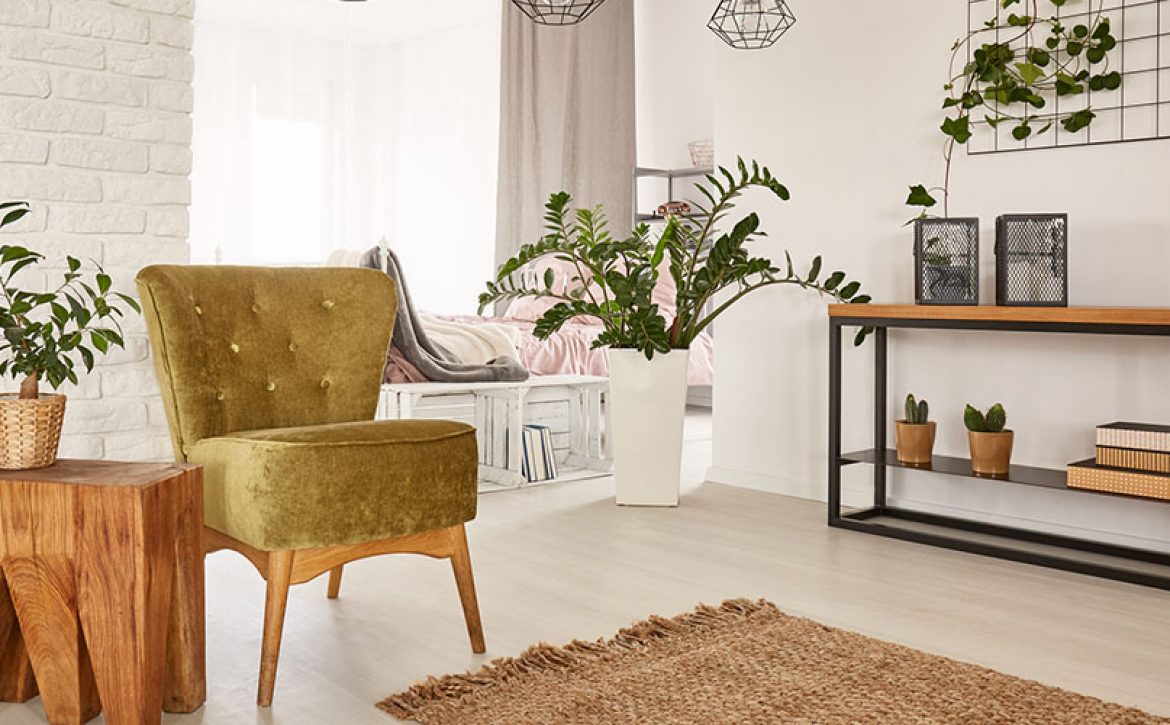
One of the most important details that shape your home’s decoration style is your choice of living room decor. This space, frequently visited not only by you but also by your loved ones, should be stylish enough to appeal to the eye and comfortable enough to make you feel at ease at any time of the day. Whether you want to refresh your current living room or design it from scratch, we have prepared a practical living room decoration guide for you. Check out these tips and welcome summer with a brand-new living room!
What Does Your Living Room Need?
As with any decoration process, the first step is to answer the questions: “What do I need?” or “What will I need?” But what exactly do we mean when we talk about a living room’s needs? First, the fundamental physical aspects of your living room—such as its location, size, and amount of natural light—will significantly determine how you should decorate it. For example, a small living room with limited natural light cannot be designed with dark colors, just as a spacious living room shouldn’t be dominated by overly light shades.
The physical size of the living room dictates your choice of furniture and the overall design concept. Therefore, your first task is to identify the strengths and weaknesses of your space. By highlighting its advantages and minimizing its drawbacks, you can achieve your dream living room with the help of well-thought-out decoration ideas. Once you clearly define the physical conditions, the next step is to consider your personal preferences. Listing your wants and comparing them against the existing conditions will help you determine feasible, realistic changes to make. After evaluating aspects such as space, lighting, and your living room’s location within the house, you can choose furniture that meets your needs. If you’re looking for multifunctional design solutions, you might consider consulting an interior designer or exploring online living room decor inspirations.
Technical Requirements
Now, let’s consider how you use your living room. If you have a large family or frequently host guests, your living room should be designed to keep everyone close and engaged. The first rule in such a layout is to establish a focal point where other furniture and elements are arranged around. Depending on the structure of your home, this focal point could be a scenic window or, as commonly seen, the area where the TV unit is placed. In this arrangement, people seated in the living room can easily focus on the center while also maintaining face-to-face interaction in a circular seating arrangement, making conversations more engaging. It is also important to ensure that there is enough space between furniture pieces so that movement within the room is not obstructed. A well-balanced, symmetrical arrangement prevents the room from looking cluttered or chaotic. Additionally, avoid clustering furniture in just one section of the living room, as this can make the space feel unbalanced. Another key factor is color coordination—if your furniture blends too much with the wall colors, it may create a monotonous or overwhelming look. Instead, opt for contrasting colors to create visual harmony.
Choosing Colors for Living Room Decoration
The first step in selecting colors for your living room is to determine the dominant shade. To create a harmonious color scheme, consider putting together a color palette. Start by choosing a main color, which will guide your choices for wall paint, furniture upholstery, and flooring materials. As the dominant shade, this color sets the tone for the entire space, and all other hues should be selected based on its influence.
If you prefer a serious and minimalist look, opt for light-colored tones. If you spend a lot of time in the living room and love watching TV, light shades help reduce eye strain. White, gray, light blue, and natural green hues can be great choices for this purpose. If you want a vibrant and eye-catching living room, incorporate orange and yellow tones. Pairing these shades with darker hues can create an airy and energetic atmosphere. For those who love dark colors, shades like burgundy, deep green, red, and purple can bring an elegant and sophisticated look to your decor. However, when using dark tones, make sure to complement them with lighter accent colors that do not create excessive contrast. This approach will maintain balance and prevent the room from feeling too heavy or enclosed.



